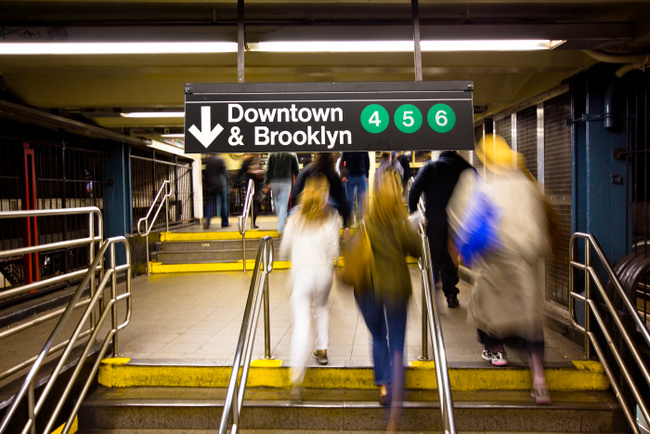As more of the 80 million-member Millennial generation enters the workforce, these so-called Gen Y-ers, age 18 to 35, are on everybody’s minds these days as one of the largest—and most fickle—groups to influence housing, shopping and the workplace. Financially strong and responsible, they nonetheless like to shop, prefer convenient housing over expansive, and while they are not yet the company decision makers, they certainly represent a growing proportion of the workforce—with a work style that is sometimes at polar opposites to their parents, the giant Baby Boomer generation. The Urban Land Institute followed up last year’s study of Gen Y housing preferences with a new analysis of their retail habits, released during the Spring Meeting, which took place in San Diego in mid-May. The study identified a strong group, with even a good percentage of those in their 20s financially independent and earning a comfortable living. Sixty-five percent of the 1,251 respondents to the survey said they do not receive financial help from their parents, with 41 percent working full time and fully 46 percent achieving household income of $50,000 or more per year. Thirty-two percent own their own home (predominantly those in their 30s). They carry an average of $22,000 in student debt, but four of five said they don’t use credit cards and 27 percent pay their credit card bills in full every month. Interestingly, while a large proportion live in or near cities, their orientation and long-term plan may be otherwise. Just 14 percent live in or near downtowns, but another 34 percent live in city neighborhoods outside the downtowns (think Brooklyn in New York City or Buckhead in Atlanta), while 13 percent live in dense older suburbs and 11 percent in newer, outlying suburbs; 19 percent in small cities...
Walkable Urbanism
The future, on foot
Do you remember the last time you walked by a multifamily community under construction? Think carefully about the walking part, because it’s important. Chances are, you were strolling in a city, not a suburb. Does anybody walk in the suburbs, other than to take the dog around the block? The answer to that question might hold the key to how development patterns will change, nationwide, over the next half-century. Apartment construction has bounced back big time, post-recession, and the hot spots for building are big cities with appeal to Millennials and Baby Boomers alike. Seattle, Portland, San Francisco, Los Angeles, Salt Lake City, Denver, Houston, Dallas, Chicago, Minneapolis, New York, Boston, and Washington D.C. “This is becoming a tale of two metro areas in this country: Those that get it, those that understand that walkable urban development is where the pent up demand is, and those that don’t. Any list of walkable metro areas that are doing well is also the list of best performing real estate markets,” said Christopher Leinberger, the leading expert on the walkable urbanism trend. In some urban neighborhoods, developers can’t build fast enough to keep up with renter demand. What’s the secret? Not the old school adage “location, location, location.” Leinberger, a senior fellow at Brookings Institute and professor at Georgetown University, describes it as closer to transit, transit, location. The research data he and his colleagues have produced on walkable urbanism has been of great interest to the media as the development cycle heats up. Having observed trends and nuance in real estate for several decades, he is perfectly positioned to explain the changing real estate development landscape. And it happens that the type of urban development he has long advocated for is now rolling out – and up – before our very eyes. “This is a major structural change, and I know there’s a lot of concern out there that this is just a blip,” he said, singling out the youngest group of apartment renters, the Millennials. They’ve been leading the demand for transit-friendly urban housing, and some observers think that once they’re ready to marry and have kids, they’ll flee the cities, heading back to the suburbs. Leinberger would strongly disagree. “We have just massively overbuilt. There’s only two ways of building the built environment – drivable suburban, and walkable urban. They are diametrically opposed as far as all the various characteristics you would use to describe them. Both are market viable, so it’s not a value judgment as to one is better than the other. It’s that we built too much of the drivable suburban, because we’ve been doing that for 50-60 years. We have pent up demand for walkable urban.” Leinberger believes that the timespan for meeting that pent up demand is long – maybe even another half-century. So expect to keep walking by major development and redevelopment projects while you’re visiting your favorite cities. And in the suburbs, there may start to be similar change – or consequences. “Get an anchor that’s walkable urban, and there will be an aura around that anchor that will help bolster (property) values,” is Leinberger’s advice to outlying, non-urban areas. Cities – even small ones – that can blend destination shopping and dining, services and offices, multifamily housing and public transit access all in the same area are planning well. His insight is more than academic. Leinberger started his real estate career as managing director and co-owner of consulting film RCLCO (formerly Robert Charles Lesser & Co). In addition to his academic work, he is President of LOCUS, a network of developers and investors who support and practice walkable urban development. And to practice the philosophies he espouses, he and several partners founded Arcadia Land Company, which works on transit-focused, new urban projects. The changing multifamily development pattern is just one piece of the walkable urbanism puzzle. A more complete picture requires...


